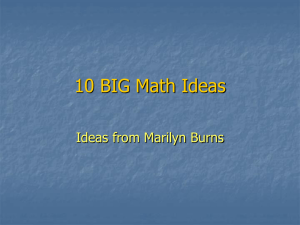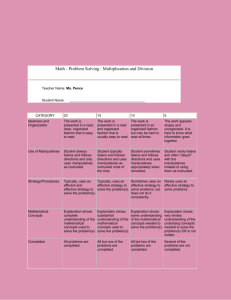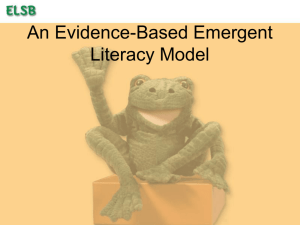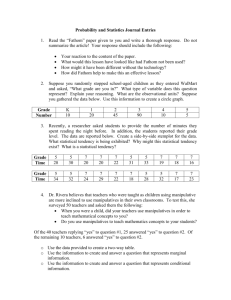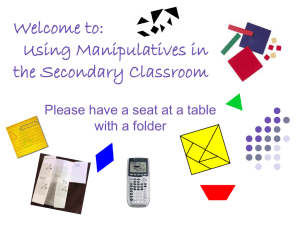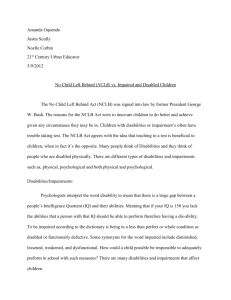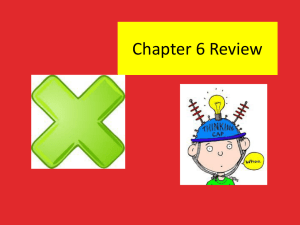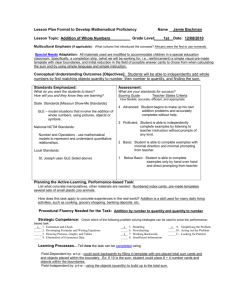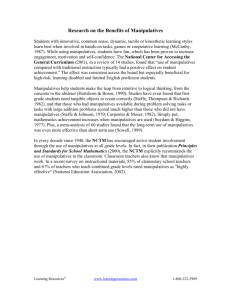Teaching to the Standards Math handout 2
advertisement
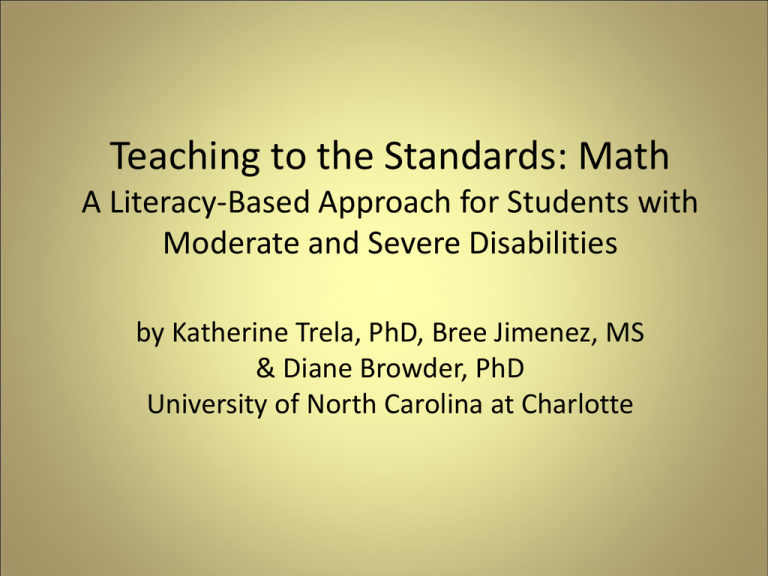
Teaching to the Standards: Math A Literacy-Based Approach for Students with Moderate and Severe Disabilities by Katherine Trela, PhD, Bree Jimenez, MS & Diane Browder, PhD University of North Carolina at Charlotte Why Teach Math? • Math Around Us • Historically taught Daily Living Skills in Real-Life Applications • IDEA (2004) and NCLB (2001)– increased expectations NCLB • Target might be alternate achievement in some states (extended standards) • Teams determine what the student will learn and how to teach it What Makes Math Difficult for Some Students • Communication challenges – Math requires reading, writing, discussing • Strategy deficiencies – Not being able to perform basic operations • Lack of past instruction – Focus only on functional math like money • Memory challenges – Math facts, math concepts Solution: Collaborate with Those Who Know • Collaborate with math and science teachers • Study state and national web sites on curriculum content • Review standards for grade level • Review textbooks • Attend professional development in the content area What to Teach? Teaching to the Standard: Promoting the learning of math skills that link to the standards of the student’s assigned grade level Which Standards? National Council of Teachers of Mathematics (NCTM) • Numbers and operations • Measurement • Data analysis and probability • Geometry • Algebra Full Inclusion (IDEA) and Access to the Curriculum (NCLB) • General educator guides what is taught • Special educator guides how to support access to that instruction Collaboration Is Key Browder, D., Spooner, F., Ahlgrim-Delzell, L., Harris, A., & Wakeman, S. (in press). A comprehensive review of research to teach math to students with significant cognitive disabilities. Exceptional Children. Evidence-Based Procedures • • • • Systematic instruction Task analysis Application in real-life settings Concrete materials (graphic organizers and manipulatives) to bridge to abstract concepts Template for Teaching to Math Standards Determine the Content with General Educators Task Analysis Analyze the steps to solve the math problem Story Write a story for the math problem Concrete Manipulatives Create a “graphic organizer” and/or other manipulatives to learn the math operation • Assistive Technology Develop student response board or select AAC device to ensure student participation • Teach and Monitor Progress Teach the task analysis using systematic prompting and feedback until student masters Math Lessons • Five Lesson Plans per unit • 2 stories per lesson • Same task analysis but different levels of support • 6 Enrichment Challenges per unit • Monitoring Progress page Standard Broaden Use of the Coordinate Plane Expand Spatial Reasoning Algebra Standard Perform operations with numbers and expressions to solve problems Use formulas and algebraic expressions to model and solve problems (learn to use symbols and that X is an unknown) Data Analysis Standard Understand and use graphs and data to solve problems Use representations to model and interpret physical, social, and mathematical phenomena Measurement Standard Perform operations with numbers and expressions to solve problems Challenge Activities • Includes extension activities for more learning to create opportunities for students to use the new skills in their lives Monitoring Progress Key Features • Designed specifically for students with mod to severe disabilities at middle to high school level • Accommodates students who are verbal or nonverbal • Embeds evidence-based practices • Uses stories to make connection between math and real life • Teach in gen ed or in resource room Teaching to Standards: Math Examples for middle and high school concepts Teach all or some One year to complete in pilot study (students with autism and mod and severe intellectual disabilities ) Teaching to Standards: Math For the Instructor Instructors Guide Story Map Posters (11) CD-ROM with PDFs for creating manipulatives Training DVD For the Students MathWork book Counting chips Dollar bills
